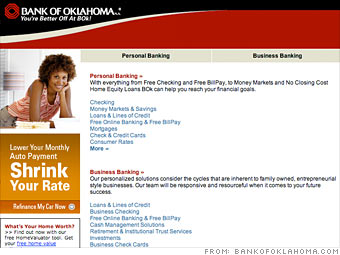
Market capitalization: $3.9 billion
Write-offs since 2005: 1%
Debt to capital ratio: 42%
With no exposure to what has hammered most financials - subprime lending, standard investment vehicles and collateralized debt obligations - this regional bank is more than just OK.
"The bank has done superbly through the credit crisis," said BMO Capital Markets analyst Peter Winter. "Its credit has been deteriorating as you'd expect, but it's very manageable."
The Tulsa, Ok.-based bank was helped by its engagement in a wide diversity of businesses, including payroll data processing, proprietary mutual funds and Treasury management. And its fee income as a percentage of revenues is around 42%, which is high for a bank of its size according to Winter.
BOK is also becoming geographically diverse. Only 10 years ago, the bank held branches solely in Oklahoma, but it has recently expanded into higher growth markets such as Texas, Kansas City, Arkansas, Denver, and Arizona.
And chairman George Kaiser, who owns roughly 65% of the bank, isn't a bad reason to invest in the company either. Kaiser bought the company for $80 million in 1990 and helped make it into a corporation with a market cap of about $4 billion.
"As a BOK shareholder you're investing along with a self-made billionaire," said Winter.
NEXT: Raymond James Financial Inc.
Last updated June 04 2008: 1:46 PM ET
Source: Thomson Baseline
